Article Highlights
Throughout history, across numerous civilizations, there has never been a metal quite as quintessential for jewelry as gold. Loved and revered for its natural beauty, people have long worn this remarkable element as a symbol of wealth and prestige. To this day, jewelry remains the biggest use for gold, with 49% of the gold mined today going towards jewelry.
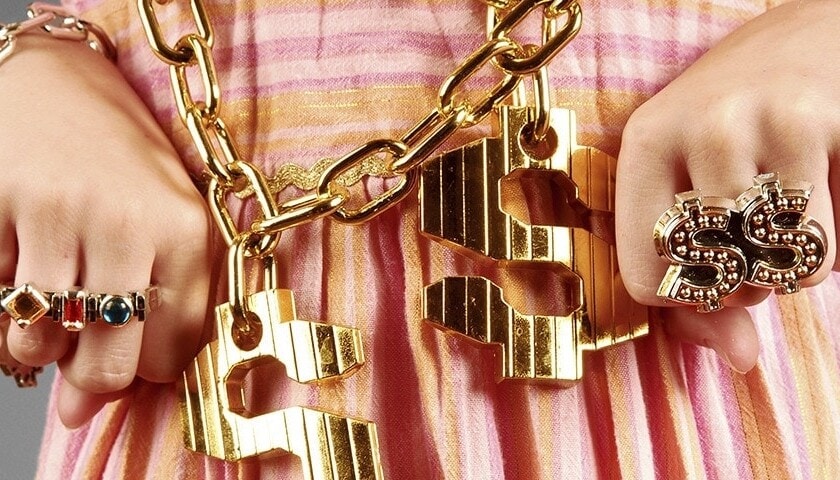
- Karatage: Karatage is used to represent the purity of gold. Learn about how karatage is measured, and how you can tell the karatage of an individual piece of jewelry.
- The Colors of Gold: Did you know that gold can come in many different colors? Find out more about the rainbow of hues that gold jewelry can come in.
- How Does Gold Change Colors?: Learn more about the techniques that are used to produce colored gold jewelry.
- Material: Not all gold jewelry is solid gold. Learn more about the alternatives, and the benefits and drawbacks of each.
Indeed, there is more to gold than simply its aesthetic appeal. Gold is also exceptionally malleable, able to hold complex shapes even while spread impossibly thin. In fact, a single ounce of pure gold can potentially be stretched out to a length of fifty miles, producing a wire of only five microns in width. This property makes gold highly valuable to jewelers and computer engineers alike, with gold serving as an irreplaceable component of microelectronics.
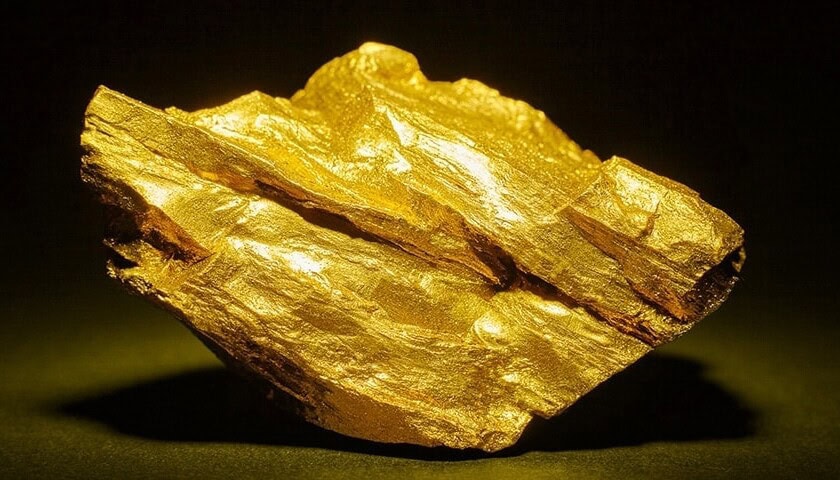
Another big part of gold’s value is the great rarity of the metal. If you were to take all of the gold ever mined since the dawn of civilization, purified it, and gathered it into a single block, it would fill a space of only twenty-one cubic meters. Further, roughly ninety percent of this gold was mined in the years after the California gold rush. It is for this reason that owning gold remains a sign of distinction throughout the world.
Karatage
What is a Karat?
A karat (or “carat”, outside of the U.S.) is a measurement of the purity of gold alloyed with other metals. When a piece of jewelry specifies a karat number, this is the number of parts of gold out of twenty-four. For example, 24-karat gold is twenty-four parts of gold out of a total of twenty-four parts, representing pure gold, while 18-karat gold is eighteen parts of gold alloyed with six parts of other metals, representing gold that is 75% pure.
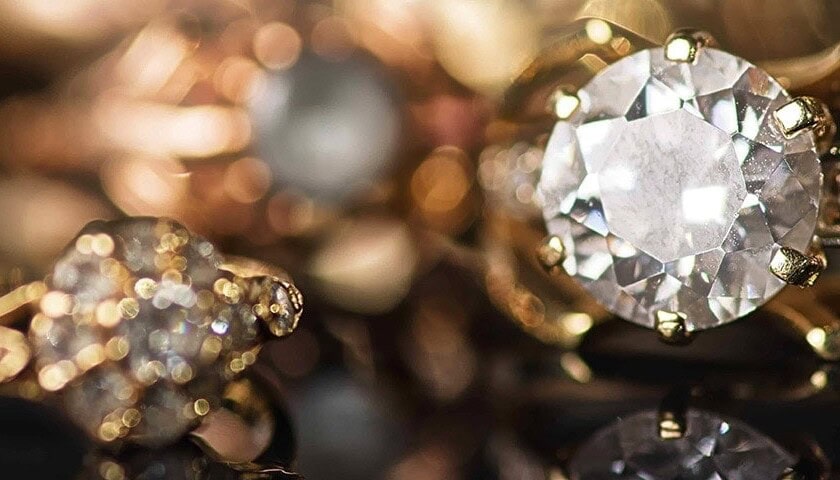
Unless a piece of jewelry is marked as “plumb” (18KP, for example), you can expect a slight margin of error for the gold’s purity. In the U.S., the legal margin of error is +/-0.5 karats. Therefore, jewelry marked as 18-karat can legally be between 17.5 and 18.5 karats.
Though it sounds appealing to have pure gold, the most popular values for jewelry are between ten and twenty-two karats. In fact, it is rare to find jewelry that is 24-karat. This is because gold is a very soft metal, and therefore not terribly practical in its pure form. You will therefore find most gold jewelry alloyed with metals like copper or silver to make it more durable and less susceptible to scratching.
The minimum karatage for a piece of gold varies from country to country. In the U.S., for example, nothing under 10K is technically considered to be gold.
Reading Karat Stamps
In general, when you have a piece of gold jewelry, you can expect to find something that is known as a karat stamp somewhere on the metal. This will most often come in the form of a number followed by one of the following symbols: K, k, KT, kt, or KT. These symbols all stand for “karat”. Therefore, 12k and 12KT both mean that your jewelry is made of twelve karat gold.
Occasionally, the karat symbol will be followed by the letter “P”. This means that the karatage of the gold is guaranteed to be at least the indicated number. For example, 20KP stands for “twenty karat plumb”, which means that the gold is at least twenty karat.
Some jewelry indicates the purity of the gold with either a percentage or a thousandth. For example, you might see the number 999, or .999. This means that the gold is 99.9% pure, effectively 24-karat.
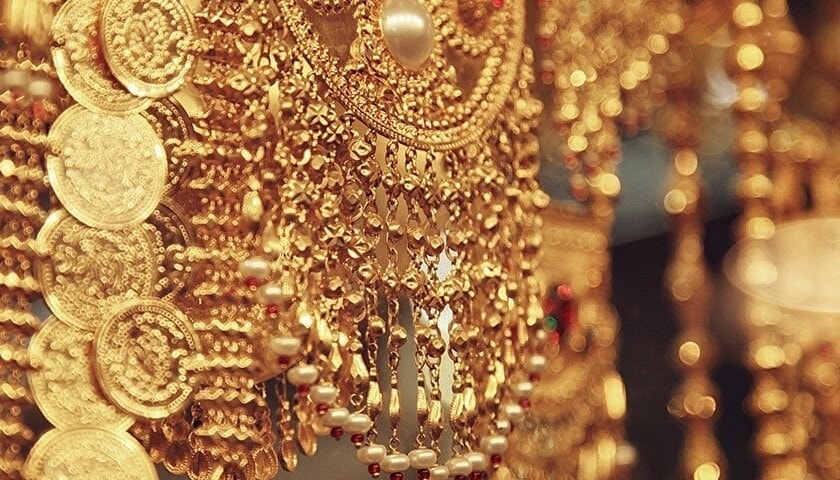
Karatage in Gold-Plated Jewelry
The karatage of a piece of gold-plated jewelry is referring only to the gold that was used to coat the base metal underneath. Therefore, if 24-karat gold that is being used to cover a mass of copper that makes up ninety percent of the piece, the karatage of the piece will still be 24-karat.
Gold-plated jewelry will usually be made with 10-karat gold, or better.
Gold Jewelry Material
A piece of jewelry that is marketed as gold may in fact only be partially gold. Indeed, while some jewelry is made out of solid gold, many pieces of gold jewelry are actually made out of a less valuable metal that is covered in a thin layer of gold. Such jewelry comes in three different forms:
- Gold-Filled Jewelry
- Gold-Plated Jewelry
- Gold Vermeil Jewelry
Making gold jewelry in this way is quite common and rarely done in an unscrupulous way. You can generally expect to pay less for a piece of jewelry that is not solid gold, compared to a similar piece of solid gold.
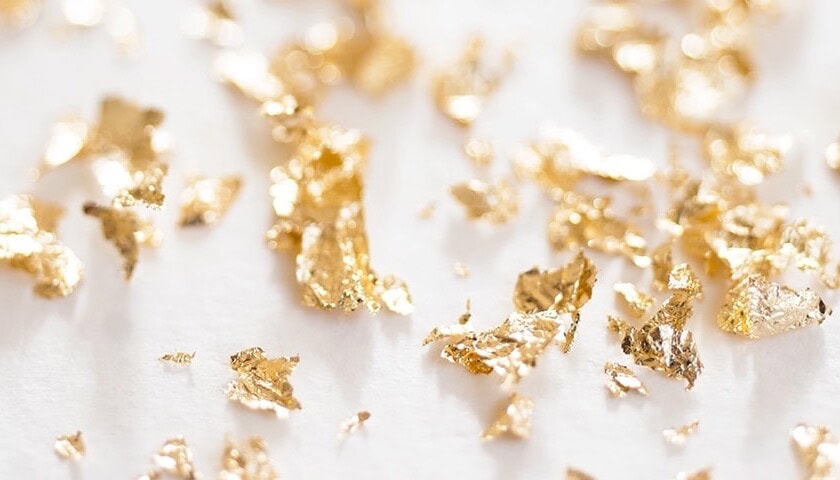
Jewelry should indicate whether it is not solid gold; if the jewelry has a standard karat marking, it should be solid gold. If the karat marking is accompanied by “GF”, the piece is gold-filled. If it is accompanied with “RGP”, it is “rolled gold plate”, or gold-plated. These letters should come with a fraction, which will tell you how much of the piece’s weight represents the gold.
Every once in a while, you may encounter a piece of jewelry that does not have any markings on it. For the most part, it can be best to stay away from such items. After all, it is very difficult to know the composition of the piece, and whether or not you are getting what you are paying for. Properly testing a piece of gold jewelry involves scratching off a bit of the gold, deep enough to reasonably see whether or not there is another metal under the surface. You will then need to test the gold you scratched off of the jewelry in an acid mixture in order to determine the karatage. This can mar the appearance of the jewelry in a way that would be costly to rectify, though, so it’s not recommended that you purchase unmarked gold pieces.
Gold-Filled Jewelry
Sometimes called “rolled gold”, “rolled gold plate”, or “gold overlay”, gold-filled jewelry describes pieces of jewelry that have been made out of a non-gold metal and then covered in a layer of gold. Such jewelry is made in many ways, though it most often consists of a brass or nickel core coated in gold between 0.03 and 0.1 millimeters thick.
Gold-filled jewelry is similar in many ways to gold-plated jewelry, though there are some important distinctions to be made. The main difference is the technology that is used to layer the gold on top of the core metals. In gold-filled pieces, the core item is wrapped in a sheet of gold and then heated so as to fuse the gold with the other metal. The techniques that go into making gold-filled jewelry allow for thicker layers of gold, which means that they are frequently more valuable than their gold-plated equals. They are also more appropriate for heavy use, as it takes the gold layer longer to be worn away.
Karatage in Gold-Filled Jewelry
You can find the karatage of a piece of gold-filled jewelry in much the same way you would with a piece of solid gold jewelry. The karat applies only to the gold coating, and not to whatever is beneath it. Therefore, a layer of pure gold coating an equal amount of another metal will still be marked as 24-karat, and not 12-karat.
The karatage stamp on a piece of gold-filled jewelry should also come with a fraction and the letters “GF”, like “1/20 14KT GF”. The GF is there to tell you that it is a gold-filled item, and the fraction is telling you how much of the item’s weight is made up of gold. Therefore, the piece in the above example is a gold-filled item covered in 14-karat gold, which accounts for one-twentieth of the total weight.
Gold-Plated Jewelry
When jewelry is described as being gold-plated, this means that it is a piece of base metal that is coated in a thin layer of gold. Though such pieces can come in many different forms, they are usually comprised of a zinc, copper, or nickel base covered in a razor-thin layer of gold bonded to the surface via an electrochemical process. As the gold layer of gold-plated jewelry is generally thinner than that of gold-filled jewelry, the cheapest gold jewelry is most often going to be gold-plated.
Because the gold on the surface of gold-plated jewelry is so thin, it breaks down fairly quickly. Even minimal wear can uncover the base metal underneath the gold, effectively destroying the aesthetic of the piece. On average, a gold-plated piece may last for roughly a year. It is therefore that jewelry companies do not recommend gold-plated jewelry for pieces that you intend to give extended use to. It’s a good, economical choice for costumers and people who want to achieve an authentic golden look for a limited run or a special-occasion item, but other people may prefer solid gold or gold-filled items.
When the gold wears away on a piece of gold-plated jewelry, you may be able to get it re-plated so that it is as good as new. Keep in mind, though, that a piece with many moving parts will make the process difficult. Additionally, the high cost of gold can add up quickly. All in all, it’s best not to plan on re-plating a single piece of jewelry too frequently.
Gold Vermeil
Gold vermeil, sometimes simply referred to as “vermeil”, comes from a French word that is pronounced “ver-may”. The word translates to “gilded silver”. Appropriately, vermeil is used to describe jewelry or other items that are made of silver and coated in a thin layer of gold.
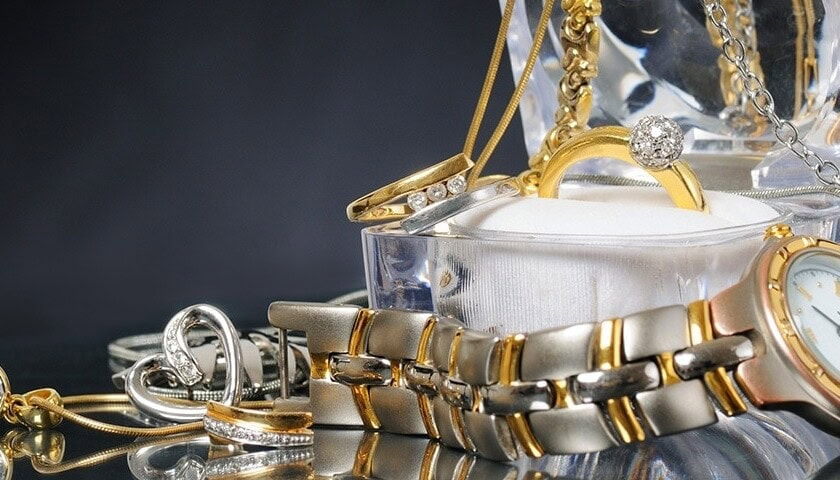
Vermeil jewelry is similar in many ways to both gold-plated and gold-filled jewelry. However, since the filling of a gold-plated or gold-filled piece is usually not as valuable as the silver of vermeil, you will often find that vermeil pieces will be more valuable than an equivalent piece of gold-plated or gold-filled.
On the other hand, vermeil may be less valuable depending on the thickness of the golden coat used on the making of the jewelry. Vermeil does not have a standard thickness specified for the gold, and you will most often find that the gold in vermeil is not as thick as the gold found in a gold-filled piece.
Karatage in Vermeil
When a piece of vermeil specifies the purity of the gold, this represents only the gold layer on top of the silver. Pure gold coated across an equal amount of silver will therefore be called 24-karat, and not 12-karat.
When it comes to shopping for a piece of vermeil jewelry, remember that the karatage of the gold is an important indicator of how much wear the piece can take. The softer the gold, the quicker it will be worn away to reveal the silver underneath. This can quickly ruin the appearance of the jewelry.
Vermeil and Nickel Allergies
It is common for silver jewelry to contain some amount of nickel, which can cause an allergic reaction in many people. However, you generally do not need to worry about this when it comes to vermeil. The silver in vermeil usually does not contain nickel, and your vendor should tell you if it does.
What Makes Gold Change Colors?
Some people are baffled when they first learn about gold jewelry coming in different colors. Are there really different kinds of gold that come in white, red, green, and other colors?
In truth, there is only one kind of gold, this being the gold with the classic yellow color that we all know and love. This is what is called yellow gold. However, a proper application of other elements can give the appearance of a different color. This can be done in one of two different ways: through alloys or through coating.
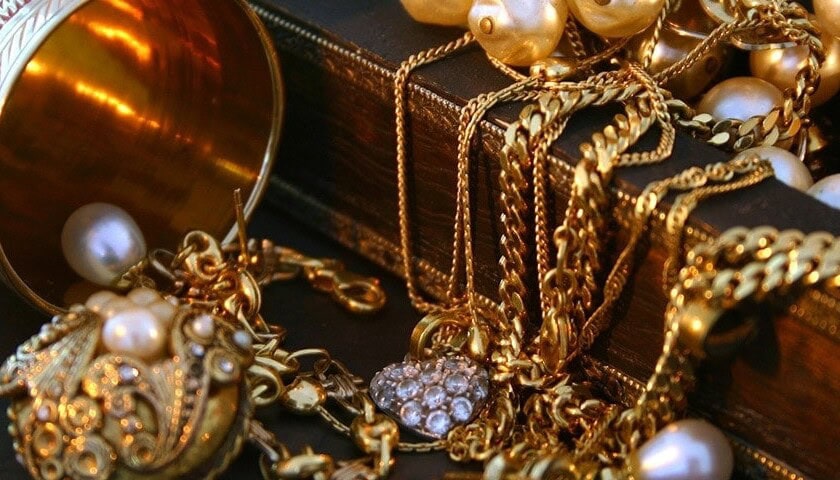
Creating an alloy is the act of mixing other metals with the gold. Even most yellow gold is going to be an alloy of some kind, as pure gold is surprisingly delicate and not terribly practical for use as jewelry. However, the metals used in a yellow gold alloy are selected and proportioned so as to not overwhelm the natural color of the metal. In colored gold, like rose gold, the other metals in the alloy are used to intentionally introduce a new color to the final product. Copper, for example, is a red-colored metal that can be used to give gold a pleasing, rosy hue when mixed in appropriate proportions.
In some of the more unusual colors of gold, the manufacturer needs to go beyond simply mixing the alloy together. The alloy may be heated, allowing metals within the mixture to oxidize and achieve a black or blue coloration.
Sometimes, however, most of the work is being done by simply covering the gold with a layer of another metal. This is a big part of the creation of white gold. The white gold alloy is not entirely white, so it is coated in a rare metal known as rhodium. Ultimately, it is the rhodium that gives white gold its color.
Colored Gold
In the world of jewelry, gold doesn’t necessarily have to be golden. By mixing or coating gold with other metals, gold can be effectively turned nearly any color of the rainbow, all while retaining the classic luster that gold is so well-loved for.
Gold that retains its natural, golden color is known as “yellow gold”. Everything that is not yellow gold is known as “colored gold”, which includes all of the following varieties:
White Gold
The most popular of the colored gold varieties, white gold is made by mixing gold with palladium and nickel, and then plated with rhodium.
Rose Gold
Gold can be given a rosey coloration with a heavy mixture of copper. With a light mixture of copper, rose gold may be called “pink gold”. If the copper is more pronounced, though, it might be called “red gold”.
Black Gold
Gold can be turned black in several ways. Sometimes black gold is an alloy of gold, cobalt, copper, titanium, or iron, treated with heat so that the surface oxidizes. Sometimes, though, the gold is simply covered with black rhodium.
Blue Gold
Blue gold is achieved with mixing gold with indium, or by mixing gold with iron or rhodium and heating the mixture until it oxidizes. The result makes for good artificial gemstones, but is fairly brittle compared to other forms of gold.
Green Gold
Gold can be made green with a mixture of silver, or occasionally cadmium. The coloration of green gold is very subtle, often coming off as yellow gold with a slight green tint. Jewelers like to juxtapose it with yellow, white, or pink gold to let the green color pop.
Grey Gold
An alloy of gold, copper, silver, and manganese.
Purple Gold
Sometimes called violet or amethyst gold, this gold gets its purple color from an admixture of aluminum. Purple gold is used to make artificial gemstones, but its brittle nature makes it a poor choice for jewelry framework.
Yellow Gold
Yellow is the most common color of gold found in gold jewelry. This is gold in its unaltered state, and the one variety of gold that is not considered “colored gold”. A classic choice, yellow gold has been worn as jewelry since time immemorial as cultures across the globe have embraced its natural beauty.
Though this is the natural color of gold, this does not necessarily mean that yellow gold is pure gold. A certain amount of non-gold metals can be alloyed with gold without robbing it of its yellow hue. In fact, it is quite rare for jewelry to be made from pure gold, as gold is a very soft metal that is terribly susceptible to damage unless it is alloyed with stronger materials.
The gold you find in jewelry may be mixed with various degrees of various different metals, which may include silver, copper, zinc, and aluminum. Pieces that have a higher degree of gold relative to the other metals will have a more striking golden color, but pieces that contain more of the non-gold metals will be more durable and more appropriate for frequent use.
Yellow gold jewelry is a good choice for people with warm skin tones (a skin tone with some yellow in it). If you are more of a rosy or pale skin tone, you may prefer pieces of rose gold, white gold, or platinum instead.
One particular advantage of yellow gold jewelry over pieces made from the colored golds is that very few people will have an allergic reaction to the metal. Roughly one in five people will have a reaction to the nickel that is frequently found in white gold, for example, but it is rare to have a reaction to the silver, zinc, or copper commonly found in yellow gold pieces.
Rose Gold
Rose gold is one of the more popular choices of colored gold for use in jewelry. As its name suggests, it is characteristic of a pinkish hue, which it gets from the copper mixed in with the gold. The more copper in the gold, the redder the gold will be. Darker red varieties of rose gold are sometimes known as red gold, while lighter varieties are sometimes called pink gold.
When shopping for rose gold jewelry, keep in mind your intended use of the jewelry. Jewelry that you intend to use heavily should be lower karatage, because the higher karatage is softer and more prone to damage.
Karatage in Rose Gold
The purity of rose gold is measured in the same way that all gold is, with the karat number indicating the ratio of gold to the copper and other metals. The amount of copper in rose gold is not standardized, but you can generally expect the copper content to be higher in lower karat pieces. However, this is not necessarily true as there will often be other metals present in the alloy.
Though you may sometimes hear people talking about “pure rose gold”, there is technically no such thing, as the gold requires the copper impurities in order to achieve the rose coloration.
Crown Gold
22-karat rose gold will sometimes be called crown gold. This name comes from the fact that it was the standard alloy for minting British crown coins, adopted to solve the problem that pure gold coins were too soft to stay in circulation for extended periods of time.
Russian Gold
Back in the 19th century, rose gold was highly popular in Russia. Rose gold was therefore known as Russian gold for a time. This is not a term that you will hear too frequently nowadays.
White Gold
As its name suggests, white gold is a variety of gold with a white coloration. It achieves this color from the other metals in the alloy, which might include silver, palladium, zinc, or nickel. The alloy itself generally still has a light yellow color to it, so pieces of white gold jewelry are generally coated in a thin layer of rhodium to give it the pure white luster that people love it for.
Of all the gold alloys, white is the most popular for use in jewelry. This is because it possesses a lot of the qualities of platinum, but without the higher price tag that goes with the heavier metal. It is a good choice to pair with high quality colorless or nearly colorless diamonds, enhancing the stones’ brilliance.
White gold is also stronger than yellow gold, resistant to scratches and other damage. The rhodium coating will gradually wear away with time, revealing the yellowish color of the gold underneath. However, this coat is easy enough to restore; if your jewelry gets scratched, a jeweler can polish away the rhodium coating and lay down a new rhodium layer. This is as opposed to yellow gold, which can only be polished by stripping away some of the gold itself.
A downside of white gold is the nickel that is generally found in the alloy. Roughly twenty percent of the population will have an allergic reaction to nickel, manifesting as an irritating rash on the area of contact. People with such a reaction may prefer yellow gold, which rarely elicits a reaction.
Karatage in White Gold
The purity of white gold is measured with the exact same standards of all other kinds of gold, with the karat rating indicating the ratio of gold to all other metals in the alloy. There is therefore no such thing as “pure” white gold, as white gold needs to have non-gold metals in order to achieve the white coloration.



